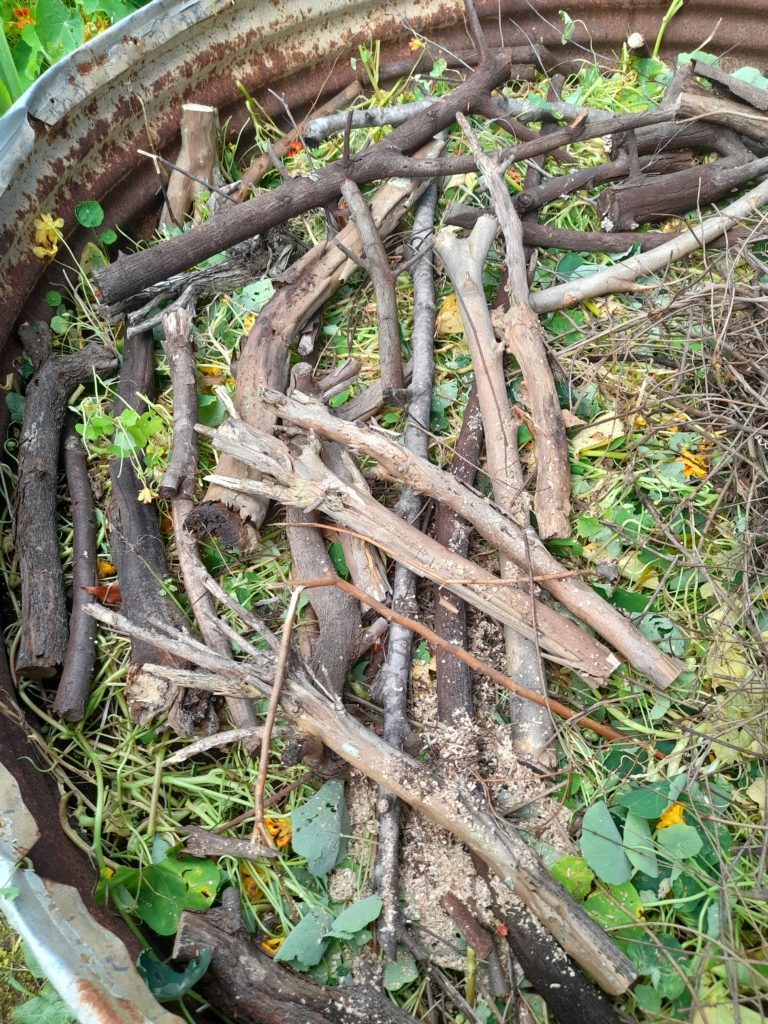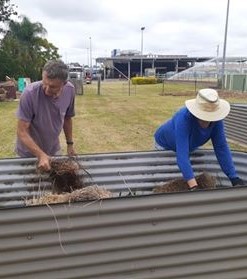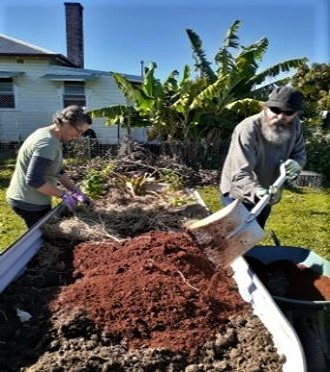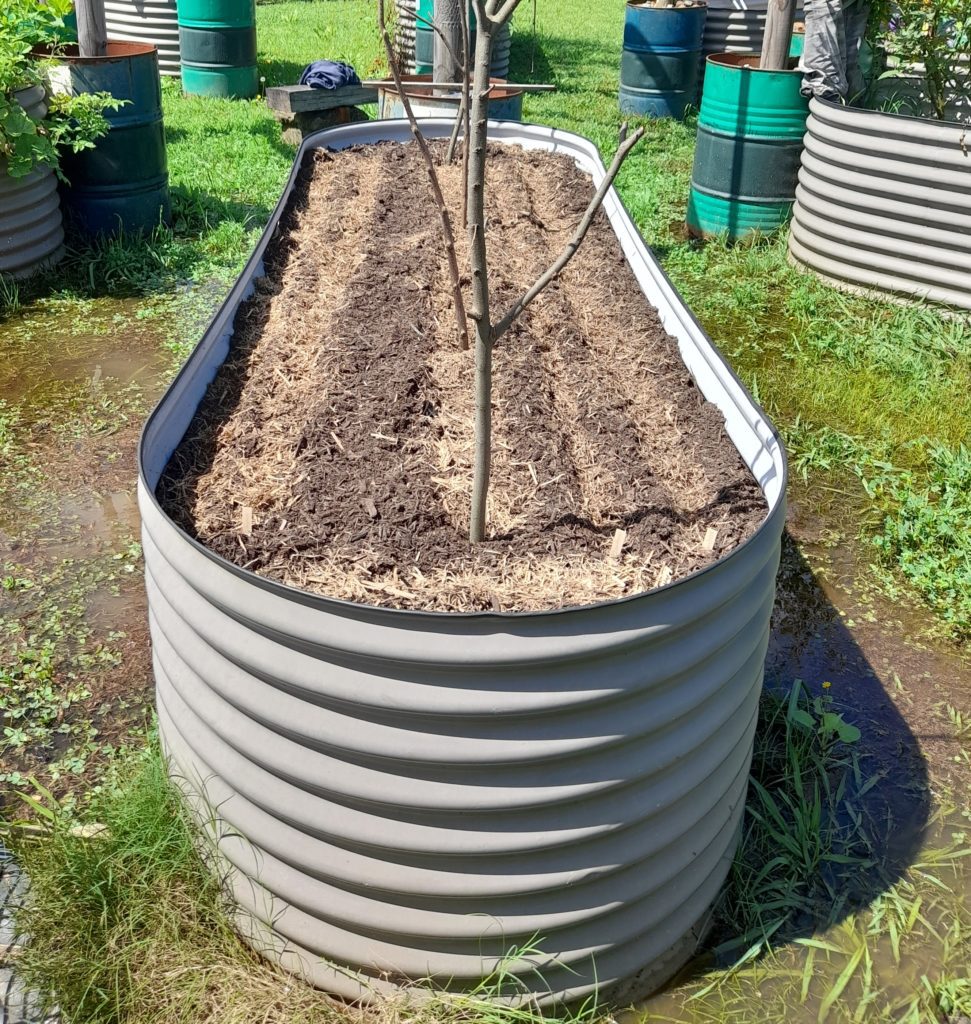Story and some photos by Bernice Shepherd
Above: Step 5 is the finished hugelkultur (hill culture) garden bed.
In recent years there has been bit of a buzz around hugelkultur and how it can benefit your soil – so what is it?
The term originated in Germany and means hill culture.
Hugelkultur is the practice of filling a trench with logs, branches and compostables such as leaf litter, straw, grass clippings or food scraps and covering it with soil, creating a mound or hill.

It can also be done on flat ground if you don’t want to dig a trench.

Vegetables can be planted into it straight away or the mound can be left for several months before using it.
The mound ingredients will break down over some years as well as being used up by your garden plants So your hill will end up a lot lower than when you started.
Over time hugelkultur creates a rich, fertile soil for growing anything you like.
Although generally done on open ground, this method can also be used to fill a raised bed.

Instead of filling the entire bed with garden soil you can start with logs, branches and twigs, adding leaf litter, mulch and compost to fill.

So why use hugelkultur?
1 While it is a hill it creates a greater surface area to plant in, meaning you can grow more.
2 One of the greatest benefits is water conservation. While they are breaking down, the logs retain water, which is then available during dry times. A raised bed filled with soil will usually dry out more quickly than a raised bed with a base of logs and branches.
3 It is an easy way to create a rich, healthy and fertile soil. Microorganisms, fungi and tiny critters feed on the logs, breaking them down into nutrient-rich food for your plants.
4 It is a great way to use up all the prunings from your garden and put them to good use.
5 Hugelkultur is an effective way of rejuvenating soil that is poor and compacted.
6 It costs far less to fill a raised bed using compostable material you have around, especially larger items like logs, than to fill it with garden soil.
There are some things to bear in mind before rushing out to create your mound:
Use wood that will break down relatively easily and does not resist rot. Dead and already rotting wood is good to go. Fresh prunings are fine, they will just take longer to break down.
Try to avoid allelopathic wood – wood that gives off chemicals that inhibit growth, such as pines, camphor and eucalypt.
If you are making a mound on the ground, orient the bed north–south so it gets relatively equal amounts of sun. An east–west bed will have a hot side and a shady side.
A mound built in a trench conserves more water than a mound on flat ground – so much better for drought resistance.
When planting, place heavy drinkers toward the bottom of the mound and plants that like it dry toward the top.
Likewise, plants that prefer a lot of sun go at the top and those that like some shade do better at the bottom.
It is best to start with plants herbs or legumes. A lot of nitrogen is used in the process of composting hard material like wood and straw so it is not as available for plants that need higher amounts of nitrogen.
As the wood rots and the mound becomes lower, more nitrogen will be available for the heavy feeders such as tomatoes and brassicas.
Hugelkultur beds should last eight or more years. Once you have created your bed you can sit back and reap the benefits as your plants thrive and your soil improves.



